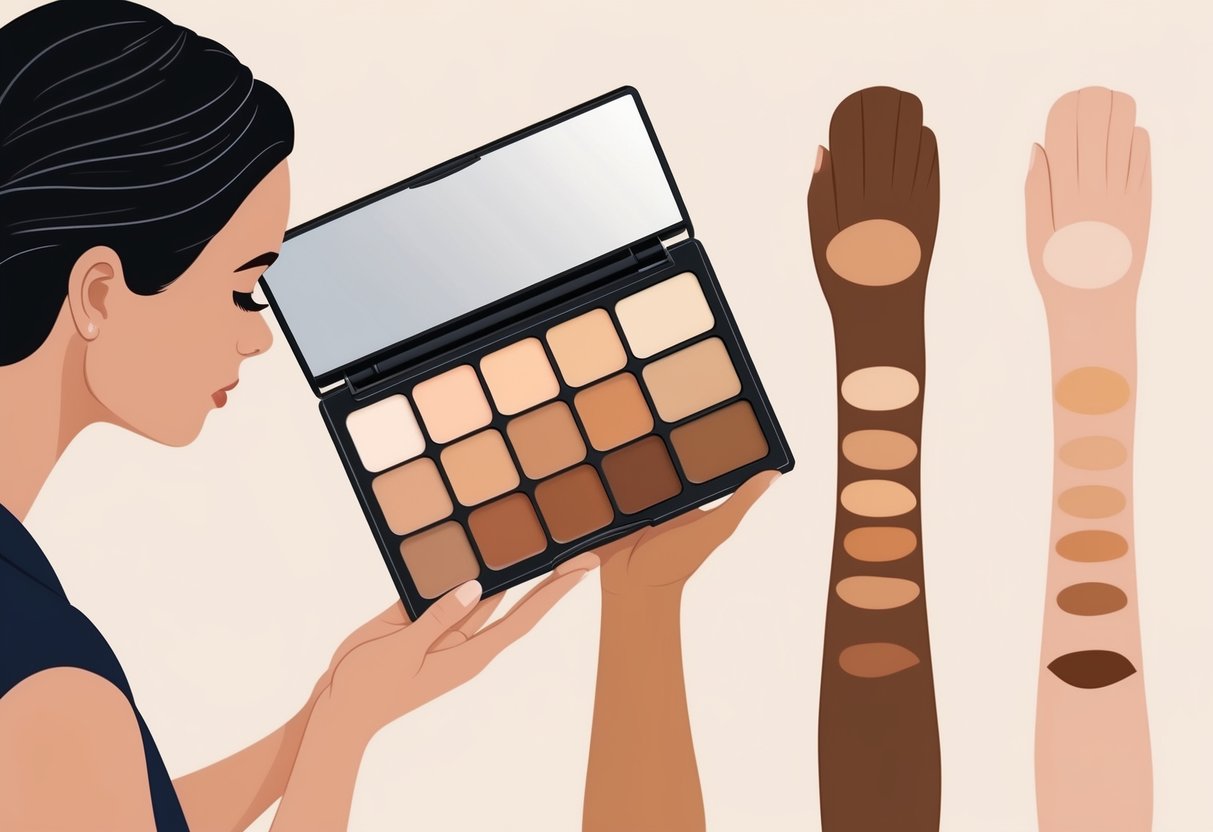How to Choose the Right Foundation Shade for Your Skin Tone: Expert Makeup Tips
Maintaining Your Flawless Look Throughout the Day

Sustaining a flawless complexion with foundation can be a challenge from morning to night. Understanding both prevention methods and quick touch-up solutions helps keep foundation fresh and skin looking even.
Tips for Long-Lasting Foundation
A good base is crucial for making any foundation match last all day. Clean, moisturized skin and a lightweight primer reduce oil build-up and smooth out pores, preventing foundation from fading or patchiness.
For best wear, choose a foundation formula designed for long wear or oil-control. Apply in thin layers rather than one thick coat.
Set the base with a fine, translucent powder to lock in your foundation. Using a setting spray helps further seal in makeup and adds a natural finish.
Carrying oil-absorbing sheets can help minimize shine throughout the day without disturbing the foundation. Refreshing with powder or spray helps maintain even coverage for hours.
Quick Fixes for Common Issues
When foundation begins to separate, oxidize, or look cakey, targeted touch-ups are most effective. For creasing, gently tap the area with a clean sponge or your fingertip to melt the product into the skin.
If oil breakthrough occurs, blot gently and reapply a small amount of powder only to the needed areas. Foundation rubbing off the nose or chin can be solved by pressing—not rubbing—a small amount of foundation back onto the spot and resetting it with powder.
For dry patches or flaking, applying a dab of moisturizer with a fingertip before reapplying foundation can smooth the area.
Frequently Asked Questions

Choosing the right foundation shade involves considering your undertones, skin type, and how product formulas interact with your complexion. Application techniques and environmental lighting can also affect how accurately foundation matches your face and neck.
How can I select the appropriate foundation shade online without a physical test?
Selecting a foundation match online can be challenging. Use virtual try-on tools, detailed shade finders, and review user photos that reflect a similar skin tone.
Comparing swatch samples on retailer websites in natural light images provides a visual baseline. Looking for reputable shades that specify undertones—warm, cool, or neutral—also narrows the selection.
What techniques can I use to ensure I match my foundation accurately to my skin tone in-store?
When shopping in-store, it’s recommended to swatch a few shades directly along the jawline and observe the shades in both indoor and natural light. The correct match should seamlessly blend into the skin without leaving a visible line between the neck and face, as described by L’Oréal Paris.
Always allow the swatch to settle for a few minutes before deciding, as foundation oxidizes and can shift color on the skin.
Can I determine the correct foundation shade for my skin without sampling it?
While sampling yields the most accurate results, individuals can reference past successful product shades, consult online complexion charts, and read in-depth reviews. Watching video demonstrations and before-and-after photos by makeup artists with similar skin tones, such as from Nina Ubhi, can help narrow options.
Seeking brands with generous return policies can also reduce risk.
What considerations should a person with Indian skin take into account when choosing a foundation shade?
Those with Indian skin should recognize the wide spectrum of undertones in South Asian skin, including olive, golden, and reddish tones. It’s important to avoid shades that are too pink or grey, as these can cause a dull appearance.
Opting for formulas that offer yellow or golden undertones and testing shades on the face instead of the wrist provides a more precise match, as explored in this guide.
How to identify my skin’s undertones and select the suitable foundation color?
Undertones can be identified by looking at the veins on the wrist: blue or purple suggests cool undertones, green indicates warm, and a mix points to neutral. Those with cool undertones tend to suit foundations with rosy or pink bases, while those with warm undertones benefit from yellow or golden bases.
A neutral undertone matches best with balanced foundation shades.
What are the steps to choosing the right foundation for different skin types?
People with oily skin should look for oil-free or matte finish foundations. Those with dry skin may prefer hydrating or dewy formulas.
Combination skin often does best with satin or natural finish products. Testing formulas to assess comfort and finish on the skin helps ensure the best choice for individual skin type needs.



